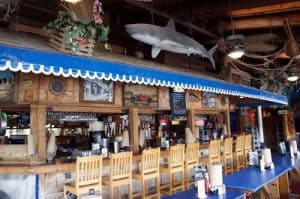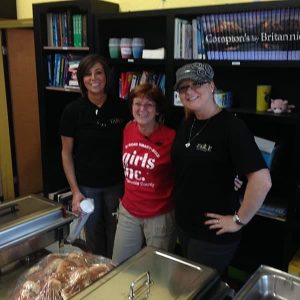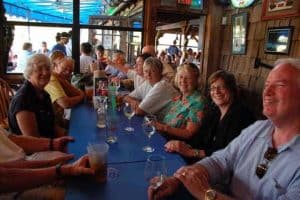(This article originally appeared in The Business Observer)
The summer slowdown in hospitality, particularly with restaurants, can be tough for some businesses to overcome.
But at Phillippi Creek Village & Oyster Bar in Sarasota, the summer, so far, has sizzled. Sales from the recent Fourth of July weekend, for example, rose more than 25% year-over-year says Phillippi Creek owner Roy LaLone. That comes on top of a strong 2015, LaLone adds, where sales were up 10% over the previous year. “The growth has been really substantial,” LaLone tells Coffee Talk.
He attributes some of the growth to several big initiatives designed to attract a younger subset of customers in the summer and during season. For one, he and his team updated the menu, from Old Florida to a mix of healthier dishes. The restaurant also recently upgraded all the dishware, to a more modern feel. The old roll of paper towels and picnic style tables remain a staple of Phillippi Creek, which opened in 1979. “The investments paid off incredibly well,” LaLone says.
Another Phillippi Creek success story is the expansion of the Creekside Trader gift shop in the parking lot. LaLone opened the store in 2012, replacing what was once a woman’s accessories store, and expanded it last year to around 1,600-square-feet. The goal was to build an upscale gift boutique that also doubles as a mini-market for people staying on nearby Siesta Key. LaLone has invested nearly $300,000 in Creekside Trader, including two beer and wine coolers that cost $13,000 each.
“We wanted to enhance the customer experience and we didn’t want it to be a tourist trap,” he says. “We didn’t want it to be just knickknacks.”
In addition to a strong start to summer, LaLone marvels at how Phillippi Creek survived the recession that wrecked many other Old Florida-style fish camps. He credits a strong staff, including what he calls the Fantastic Six, his senior managers and chefs who make most big decisions in a group.
LaLone also reached into his own pocket to keep Phillippi Creek alive, like the time, in 2009, when he sold his six-figure coin and currency collection so employees could get paid. (He has since restarted the collection.)
“That was a brutal time,” LaLone says. “People were spending less money and eating out less, but I had payroll to meet.”





